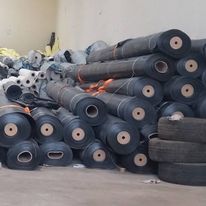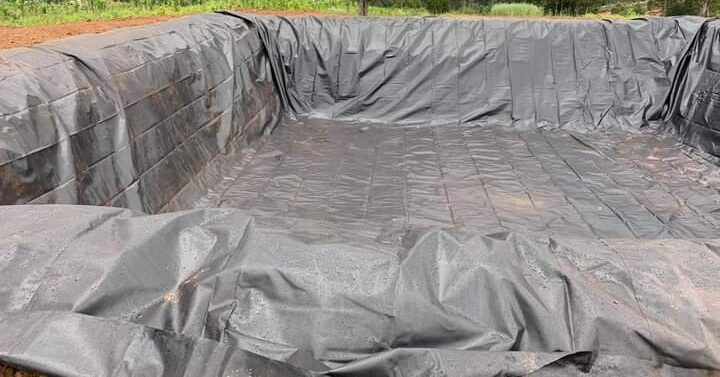The Growing Need for Waterproofing Solutions in Somalia
Water scarcity and periodic droughts have long been a challenge in the Horn of Africa. Particularly, Somalia is one of the countries suffering from severe water shortage due to deforestation, desertification, and degradation of natural catchments of water. Among the sustainable measures, waterproofing solutions in Somalia have emerged as an innovative approach toward water resource conservation and combating the impacts of drought.
The Role of Groundwater in Combating Drought
Groundwater is important in providing a sure supply of water during long droughts. It is a resource hidden beneath the surface that, if well managed, can mitigate the water crisis in arid regions such as Somalia. Efficient use of groundwater involves sustainable practices, modern infrastructure, and active community involvement.
Groundwater Statistics
- 30% of Somalia’s population relies on groundwater as their main source of water.
It means that 80% of the water extracted in rural areas serves agriculture and hence needs to be used more sustainably.
Linking Deforestation to Drought in Somalia
Deforestation is a significant driver of drought in Somalia. Trees and other vegetation absorb rainfall and return part of the water to the soil, which helps to increase groundwater storage and reduce desertification. The clearing of forests upsets this natural process, creating less groundwater storage due to increased run-off and promoting further desertification. The anti-deforestation intervention should be promoted in order to ensure water supplies are conserved and the probability of droughts decreased.
Case Study: Impact of Reforestation in Puntland
In the Puntland region, one community-led reforestation effort realized a 15% increase in groundwater recharge rates over a period of just three years, underlining vegetation restoration as one of the high contributors to water resource improvement.
Why Waterproofing Solutions Are Key in Somalia
Waterproofing solutions are very important in protecting water storage infrastructure and reducing loss of water to leakage and evaporation. Some such solutions include:
- Reservoir and dam waterproof liners: prevent seepage and efficiently store water.
Well-sealing techniques: Protect the groundwater from contamination and evaporation. Rainwater harvesting systems: Improve the efficiency of water collection and storage, especially in arid areas.
Table: Benefits of Waterproofing Solutions in Somalia
| Waterproofing Technique | Benefit | Application Example |
|---|---|---|
| Reservoir liners | Prevents water seepage | Used in Baidoa water storage tanks |
| Well sealing Reduces contamination risk Ensures clean water for Hargeisa | ||
| Rainwater harvesting systems Increases water availability during drought Schools and homes in Mogadishu |

A Three-Pronged Approach to Sustainability
If drought management is to be effectively addressed, sustainable solutions must address the following three major actions:
- Stop: Immediately cease all acts of deforestation and over-extraction of groundwater.
- Reverse: Restore degraded land by replanting forests and thereby replenish the groundwater storage.
- Prevent: Practices for water security, including waterproofing solution implementations and awareness programs.
Awareness Building Through Education
Awareness campaigns go a long way in making people get involved in the mitigation process. Much involvement could be instigated among schools and the communities through the following: sensitizing communities on the need to conserve water underground; urging communities to adapt sustainable methods of waterproofing; demonstrating the dangers of deforestation and its relation to drought.
In Somaliland, a program driven by an NGO involved water conservation and waterproofing workshops in 50 schools, reaching more than 10,000 students within one year. ????
Leveraging Research and Resources
Published research papers and articles provide a wealth of information on drought management in arid regions. These resources can guide policymakers, NGOs, and local authorities in implementing effective strategies for groundwater conservation and waterproofing solutions.
Credible Sources:
- UNICEF Somalia: Reports on water scarcity and its impacts.
Information on deforestation and land degradation by FAO Somalia, strategies to improve water resource management by the World Bank.
Drought Control Somalia: Waterproofing for a Cause
Drought Control Somalia works for the conservation of water resources through the regeneration of the most vulnerable areas in Somalia. This it does through:
Advocacy for sustainable land-use practices.
Introduction of waterproofing solutions to retain more water.
Reforesting areas of high importance that have been degraded.
Moving Towards a Sustainable Future
Groundwater, coupled with ingenious waterproofing solutions in Somalia, points to a greener future with the possibility of alleviating drought conditions throughout the Horn of Africa. The future belongs to deforestation control, increased awareness, and investment in sustainable water management https://primevariablecovers.co.ke/?p=3258techniques that will keep Somali water safe for generations to come.

